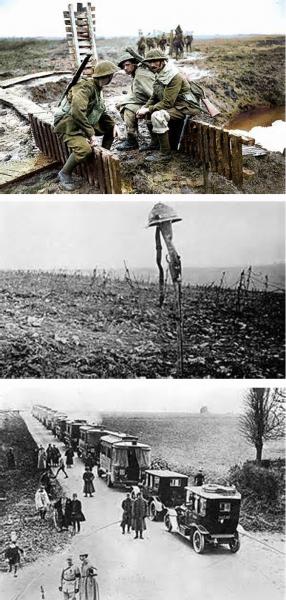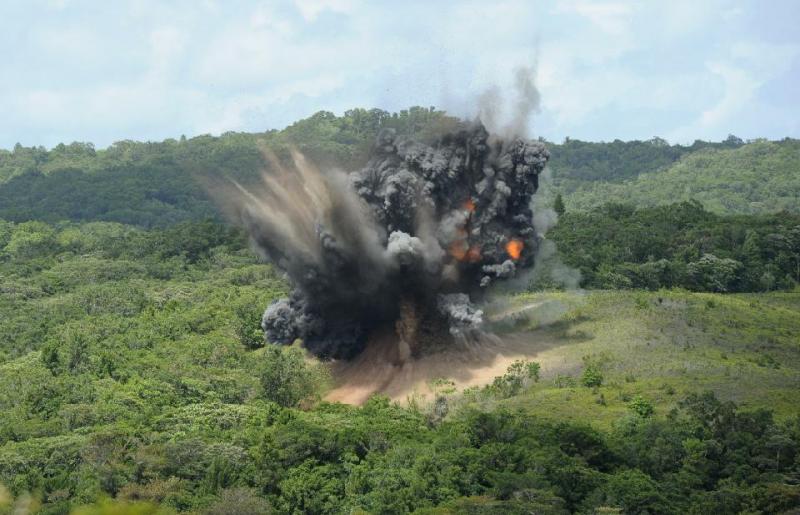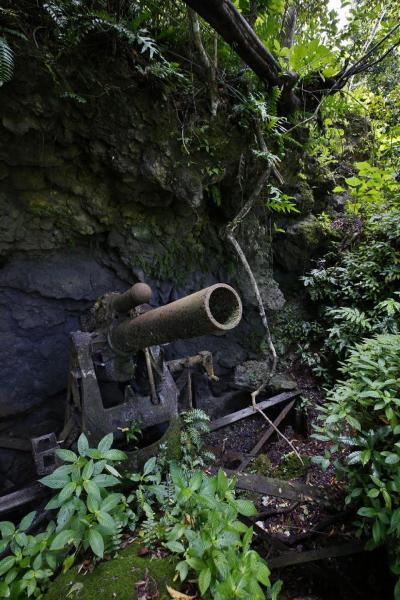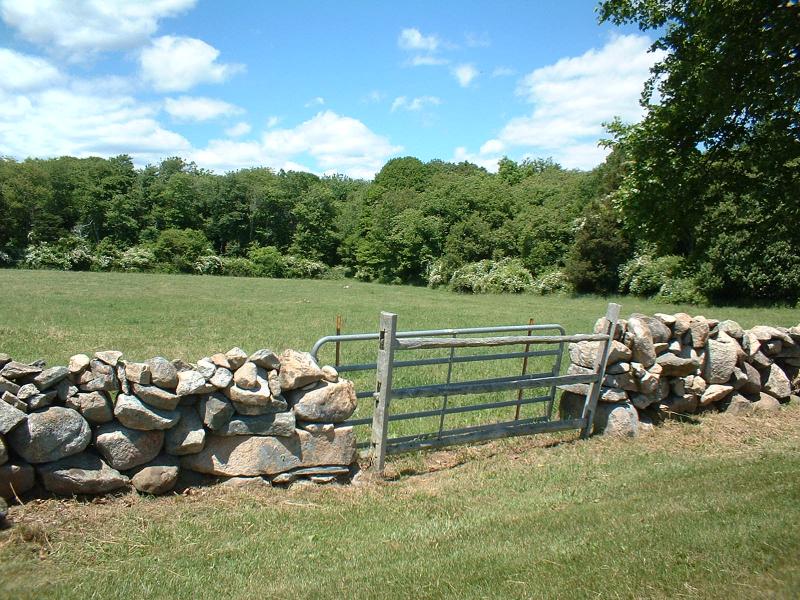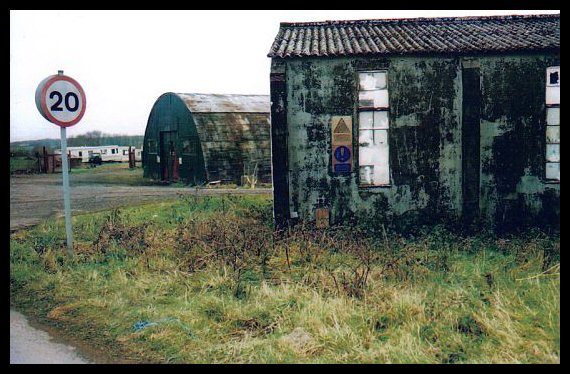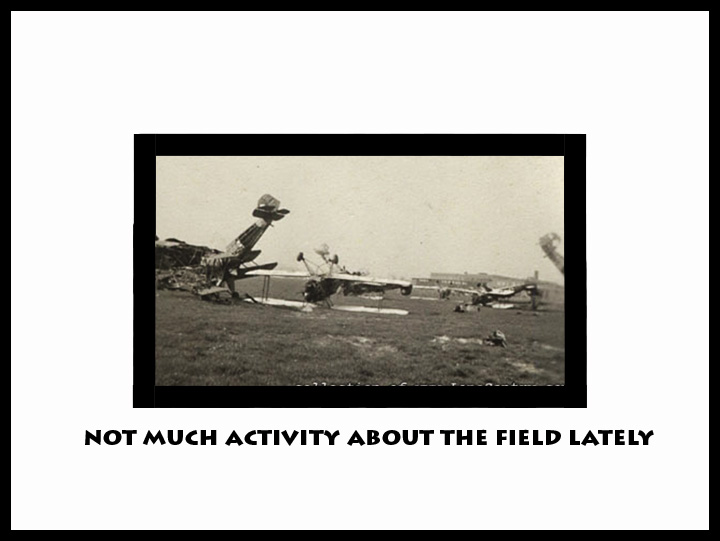-
Posts
2,637 -
Joined
-
Last visited
-
Days Won
1
Content Type
Profiles
Forums
Gallery
Downloads
Store
Everything posted by Hauksbee
-
This is it! The high-water mark of the German advance. The last Hoorah! of the Schleiffen Plan. The last battle of "The Battles of the Frontiers".The war of movement is over; now we can settle down to a restful, no-marching four years when all parties get pummeled in place by one billion, five hundred million artillery shells. Enjoy! .
-
Articles of Surrender signed, no doubt, on the deck of the Yamato, or the Musashi? What game was that from?
-
It got passed me until the smallish hours of this morning (Sept. 3) but yesterday was the end of WWII. The Articles of Surrender were signed aboard the Battleship U.S.S. Missouri. 'Good to have that out of the way, so we can get on with the new... .
-
Right on! Or, put their check in an artillery shell and airmail it to them.
-
Agreed. But my assumption was that pilots would be sensitive to national markings on the wings, whereas troops on the ground will fire on anything that moves. Hence the broad black and white "Invasion Stripes" on Allied planes at Normandy, WWII.
-
Great picture, but, if, when you say "German troops", shouldn't the writing be on the underside of the wings?
-
Sometimes there's nothing worse that having been right. They were pouting. Still Jim, back to those Krupp detonators. Do you have any information on how they proposed to calculate the number of German soldiers killed per fuse?
-
This gets better and better. I would think that licensing fees would depend on how many fuses were made. (which could be precisely known). But did they really try to estimate numbers of German soldiers killed? That's got to be a shot in the dark for sure. Were the figures ever disputed (to the best of your knowledge)? And the British actually paid? A similar strangeness happened concerning the Enigma cyphering machine. Before the war, (in the late 20's I believe) the German company the was building and promoting the machine (for industrial secrets) approached the Brits, and were turned down. Nobody was interested. Later, either after the war, or perhaps just after Enigma was broken, blueprints for the machine were discoverd in basement files of the British Patent Office.
-
"...a form of their licence fees". I'm unclear here. Is this a typo Jim?
-
The five chemists who developed gas warfare went on to be honored for other developments/discoveries in chemistry. But, like von Braun, they had much in their past to answer for. I think it's amazing that there hasn't been a major disaster yet. After all, these things are frequently found by farmers banging into them with their plows.
-
Good find , Jim. For those who wish to follow this link, scroll down about hallway in the left-hand frame. There are two articles: (1) Death waits patiently at a Belgian beach, and (2) Poison Gas: the Abomination of Houthulst. The first recounts the dumping of poison gas shells in the ocean at a nearly deserted beach that is now a popular seaside bathing spot. A horrendous number of shells are lying in the water, happily corroding away, sometimes in as little as two feet of water. These are not duds, they are live time bombs. But Holland and Belgium are so small, so densely populated, where else can you put this stuff? The second article is even worse. The man in charge of storing poison gas shells (and regular high explosives, both of which you can no longer dump at sea) Commander Pille states that the number of live shells being found is not declining. 72 mine removers work at it daily. This is twice the number as ten years ago. The article relates that in WWI, 1,500,000,000 shells were fired. (Yep, that's one BILLION, five hundred million) Of these, 30% did not explode. My first thought was: "What's wrong here? Couldn't these people design a decent fuse? Or, did they suffer from shoddy workmanship?" Turns out, the shells were just fine. It was the target that was the problem. Holland and Belgium are not called the Low Countries for nothing. So low, in fact, that the water table is very close to the surface. It only takes a little rain to produce a lot of mud. A little more and it goes to muck. Then ooze. A shell entering this slurry of water and dirt does not encounter enough resistance to activate the detonator. It just slows down. And sits there for years. Commander Pille is quoted as saying, "People think that this stuff is no longer dangerous after all this time. Nothing could be further from the truth. The charge has become chemically unstable and therefore sensitive to shocks and friction. With some shells, there is only a little spring one millimeter thick that is restraining the pin. What do you think would happen if that spring were to rust through? Each year it deteriorates more." It's a cruel fact of history that the five German scientists who were involved in the development of this gas warfare each later went on to receive the Nobel Prize. How's that for irony? The picture below is of the above ground storage sheds at Houthulst .
-
And it's not just WWI. I saw this with morning coffee: http://news.yahoo.com/clearing-wwiis-explosive-legacy-pacific-044209150.html An article on Peleliu Island in the Pacific. Nowhere near the density of shells fired in WWI, but put onto a tiny island, and every bit as deadly. .
-
I was impressed with the figures when I read the article, but seeing your photos, Olham, is chilling.
-
Farmers here in northeastern United States do the same thing with rocks that emerge from the earth in the spring thaw. Then they stack them up and build walls with them. Works great here, but probably not a good idea in Flanders. .
-
"And now the mighty military machinery began to roll, and even the Kaiser had to realise, that from now on he would not be able to stop it anymore." Good quote, and too true. I recall reading one account that said WWI was the first occurrence of war where the full might of a modern industrial state was brought to bear. (tho' I think the American Civil War might hold that dubious distinction) Where Kings and Barons struggled over the size of their fiefdoms, they paused periodically due to bad weather and lack of funds. By comparison, modern war is a fight to the death. The very size of the commitment makes it nearly impossible to disengage. Good quote, and too true. I recall reading one account that said WWI was the first occurrence of war where the full might of a modern industrial state was brought to bear. (tho' I think the American Civil War might hold that dubious distinction) Where Kings and Barons struggled over the size of their fiefdoms, they paused periodically due to bad weather and lack of funds. By comparison, modern war is a fight to the death. The very size of the commitment makes it nearly impossible to disengage.
-
Found this amongst the Yahoo News offering this morning. I confirms what I read in a copy of "Horizon" (now, sadly, defunct) nearly twenty years ago. There's still a humungous amount of artillery and grenades coming to the surface each year. And no end in sight. And it's still killing people, even the professionals who are called to dispose of it. This article does not mention gas-filled shells, but the Horizon article did. The pros who do this kind of work said the gas shells were the worst. In them, the chemical constituents are still pristine, waiting to burst forth into the air and corrosion has in many, many cases rendered the shell walls paper thin. Disposal crews will prefer to handle high explosive shells over gas shells every time. And...there are more every year. By Antony Paone VERDUN France (Reuters) - The fields and woods around Verdun, site of one of the most devastating and protracted battles of World War One, may now appear tranquil. But remnants of the war - unexploded ordnance - still pose a threat 100 years on. The 10-month Battle of Verdun ranks among the bloodiest encounters in the Great War, its unrelenting hailstorm of ammunition killing hundreds of thousands French and German soldiers from February to December 1916. French and German Presidents Francois Hollande and Joachim Gauck both attended commemoration ceremonies in Alsace and Liege on Sunday and Monday to mark the war's start and pledge Franco-German solidarity. But in this area of northeastern France, and across the border into Belgium, the fallout from the fighting still lingers. Farmers and hikers around Verdun say they regularly find discarded artillery shells and grenades, vestiges of the war that are still potentially lethal. Crosses are seen at the cemetery outside the WWI Douaumont ossuary near Verdun, northeastern France, … "I can't tell you how many I find sometimes," said Roland Dabit, a resident of the nearby hamlet of Somogneux. Even in the forest. How many are there in the forest? How many? Believe me, when we go mushroom-picking, I see a hundred shells," Dabit told Reuters. Farmer Alain Doyen says that after tilling the earth in his fields, he often finds old German shells. "It is a bit scary sometimes because when you are in the middle of the field you don't feel like touching it," Doyen said. "It's better not to leave them in the middle so I try to move them to the side." The bomb clearance unit from the nearby city of Metz has its hands full responding to the numerous calls from residents and collects some 40 tonnes of ammunition each year. Craters from shelling during WWI are seen in the village of Bezonvaux, near Verdun, northeastern Fra … Every day a two-person team patrols the Verdun sector looking for shells, some 1 million of which were fired by the Germans in one of the first salvos of the conflict alone. That heavy shelling works out to an average of six shells that fell on each square meter of earth in the area during the battle. "If you have a million shells falling - besides all those that fell after - the turnover of the soil inevitably buried a large number of those that didn't explode," said Guy Momper, one of the 10 specialists in the unit. The construction of new houses regularly reveals large quantities of shells during excavation, a delay often taken into consideration when building a new house in the sector. Today we need more space, we build new houses, and what happens? We stir up the earth. When you stir up the earth, you keep the legacy of this war which are the shells, the grenades and the mortars," Momper said. "So in this sense, the war is not over," he added. "And I think, in the area where we are now, it will continue for 100 or 200 years." Although reckless inhabitants sometimes try to destroy the ammunition themselves - one local man used improvised means last month to explode a 155mm shell in the forest - Momper recommends that the bomb clearance unit be notified and the dangerous work be carried out by professionals. Precise figures on the number of deaths due to exploded shells are hard to come by, but two experts from the Metz unit were killed in 2007 after a shell they were transporting detonated. Momper said that given the number of munitions that remain in the area and are yet to be discovered, "it's almost impossible that nothing will happen." "Someone said once, 'the bomb does its own thing'. In normal conditions if it's in a certain position, you can carry it around taking a number of precautions," he said. "You might be able to carry a million of them but the next one might explode." (Writing By Alexandria Sage; Editing by Toby Chopra)
-
Today's the day! A hundred years on, of course, but the Schlieffen Plan lives and the ghosts still march. I wonder if they still declare a truce at Ghost Christmas and toast themselves and each other? This evening, I certainly shall.
-
So...the answer is 'yes'? The actor and our composer is the same person?
-
Hard to say. However; since it's so bloody slow around here, and nobody seems to want to harry to Boche (presently company excepted) What do you say about a new coat of paint on the BOC Mess? .
-
You're right. The upside-down one in the center is definitely a Tiger Moth. Check the cross-braced landing gear.
-
Greetings Olham! Sorry, there's no info on the pic. I just Yahoo Searched for "Late WWII2 Airfields" and this was among them. Truth to be told, it looks more like late WWI, but...no telling.
-
-

How World War I gave us 'cooties'
Hauksbee replied to Hauksbee's topic in WOFF UE/PE - General Discussion
Other grievances were the intense, and arrogant, proselytizing on the part of English chaplains in the army. The Hindus had a long relationship with God stretching many centuries before Moses. They resented being lectured to by this new, upstart religion which dismissed their traditions as simple idol worship. Also, ominous rumors were swirling that units of the Indian army would be sent overseas to fight/support other British campaigns. Being forced to cross "the Black Sea" would break their caste. There are some others that escape my memory at the moment, but the cartridge kerfuffle was simply the spark set off a larger powder keg of dissatisfactions. -

How World War I gave us 'cooties'
Hauksbee replied to Hauksbee's topic in WOFF UE/PE - General Discussion
...and then there's "khaki" for that particular shade of military green.


